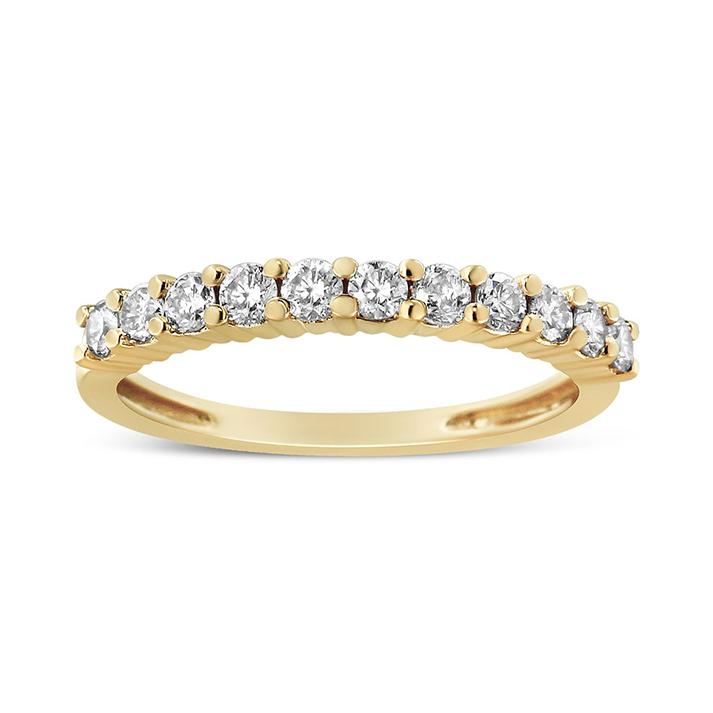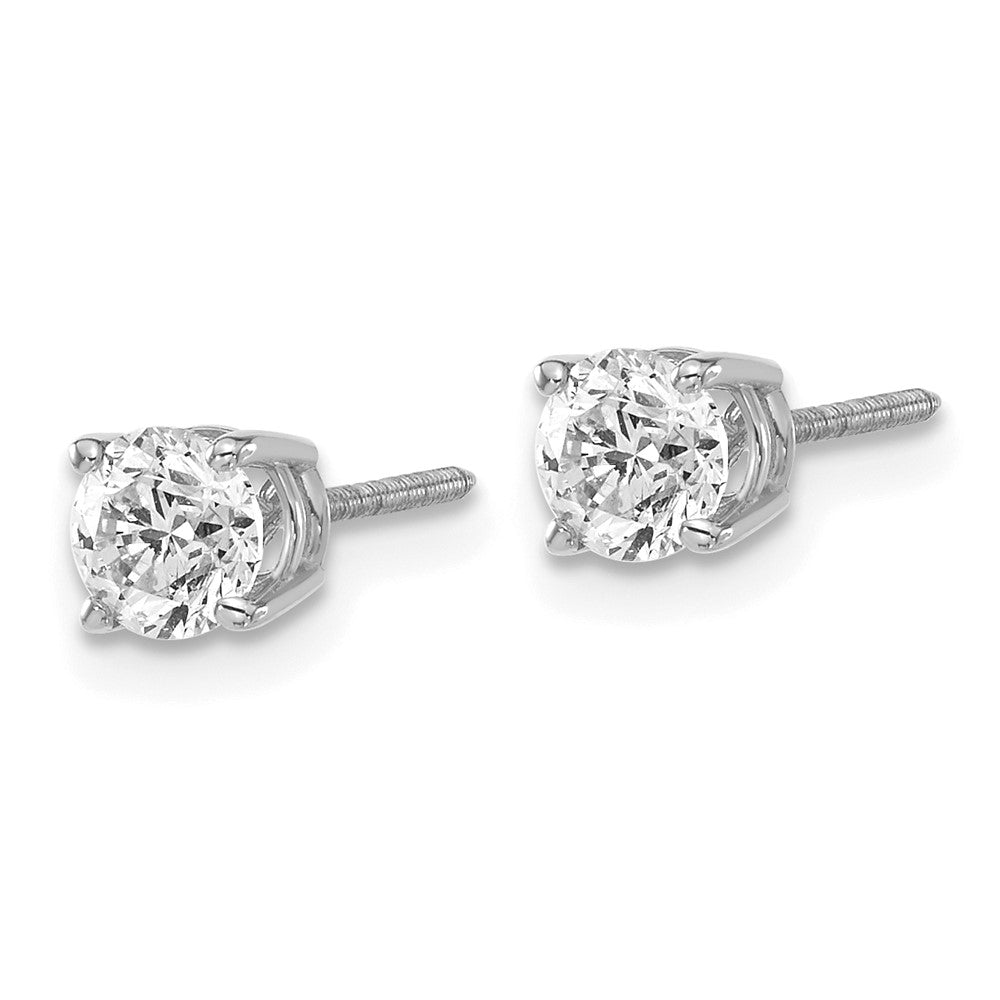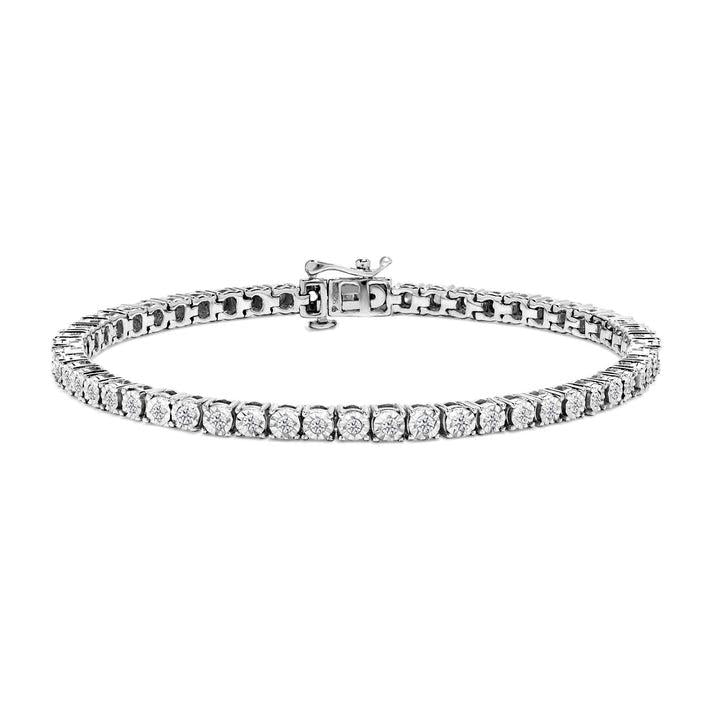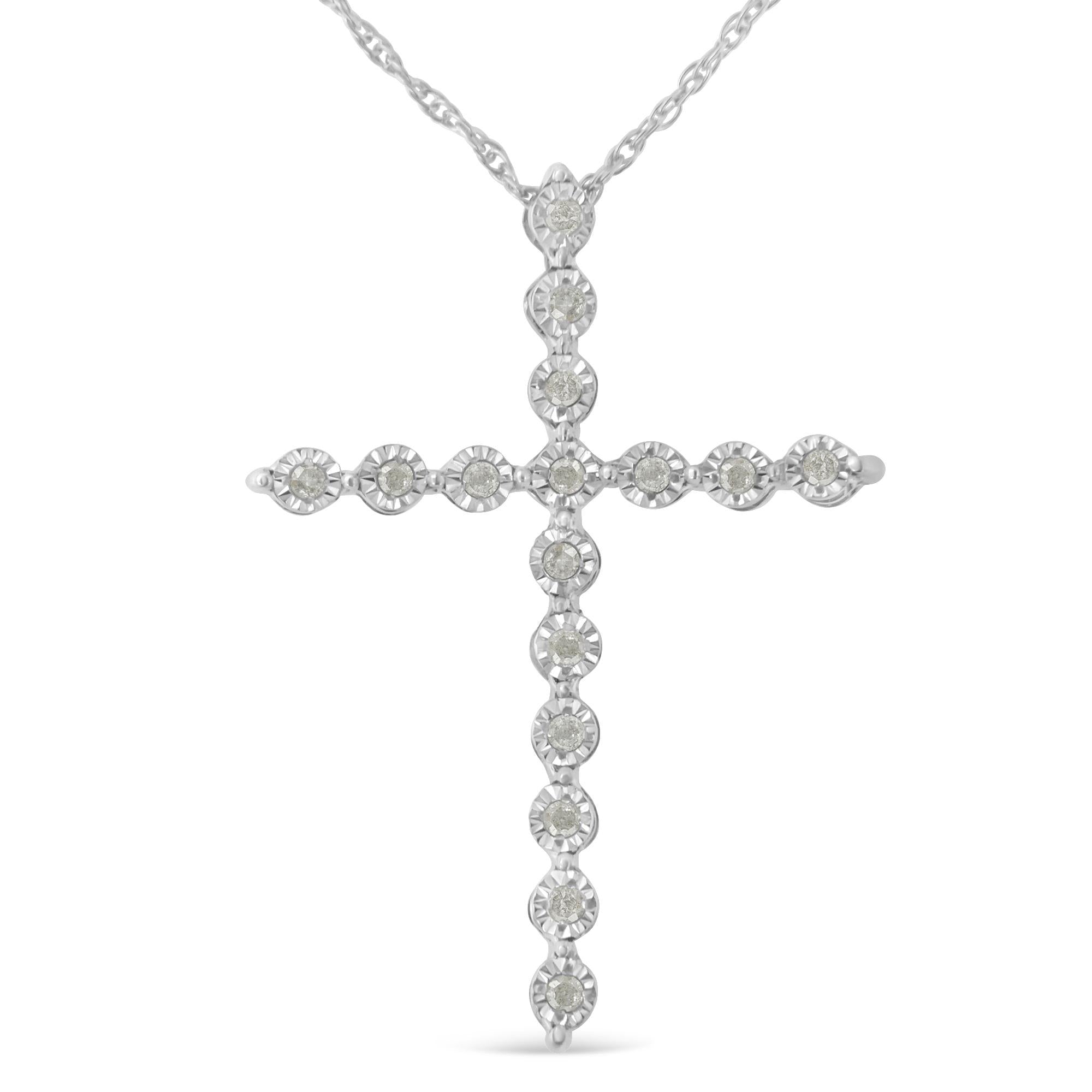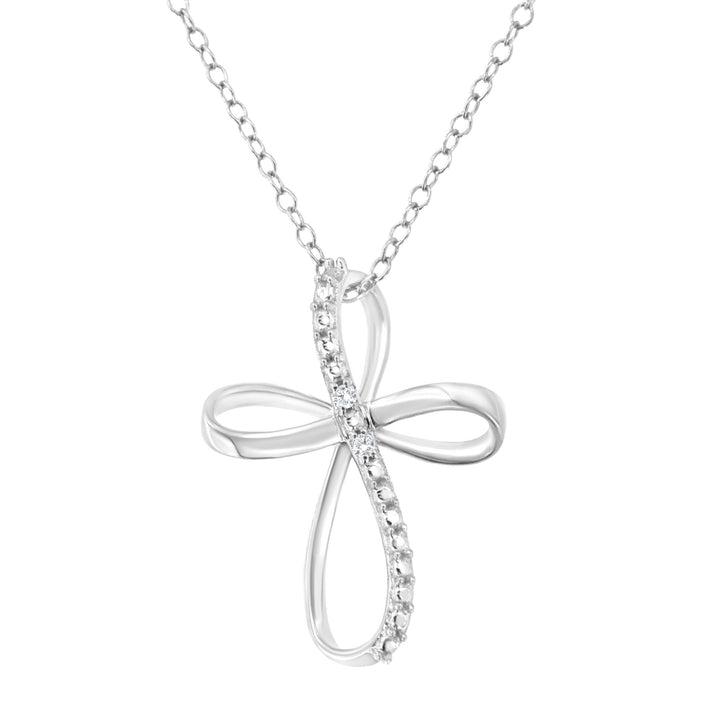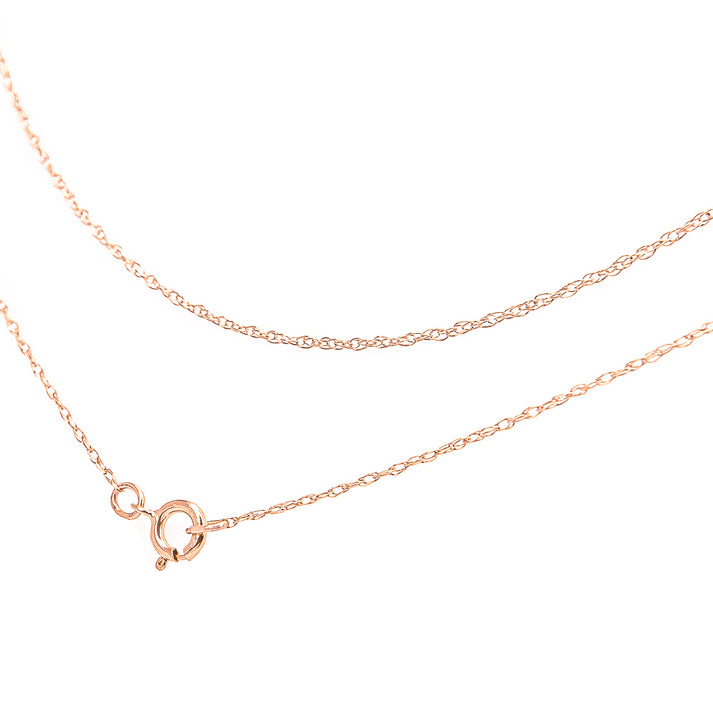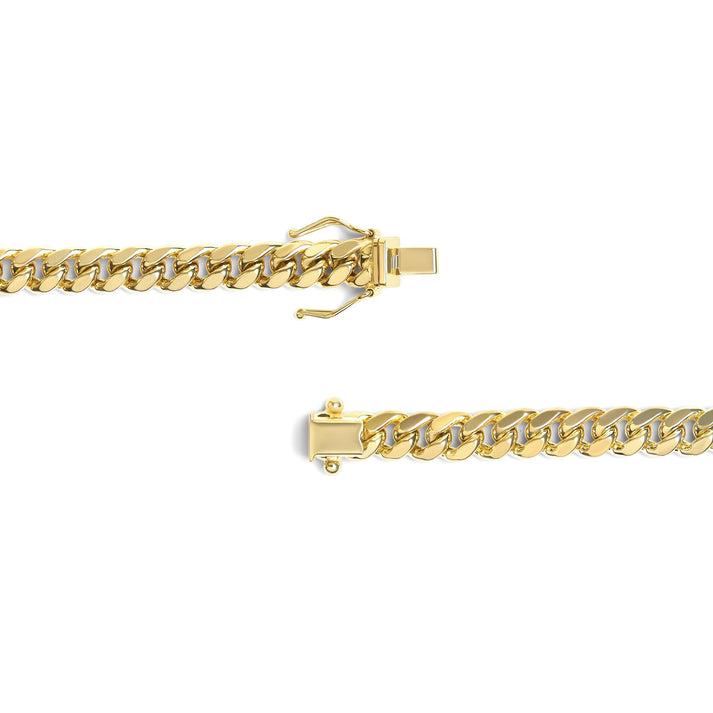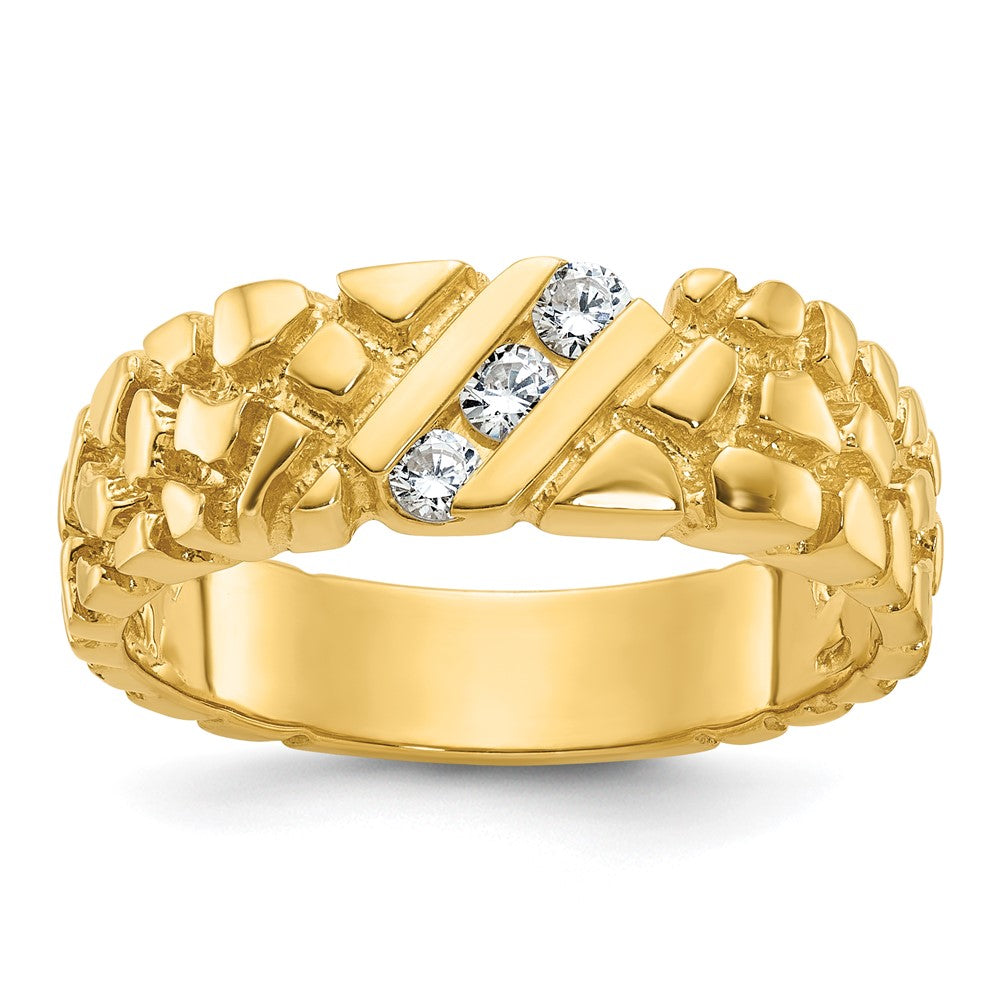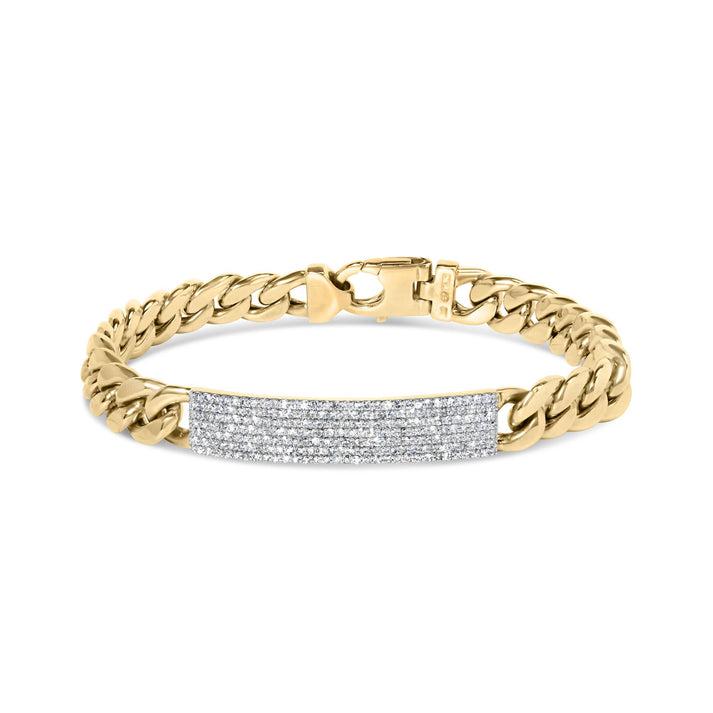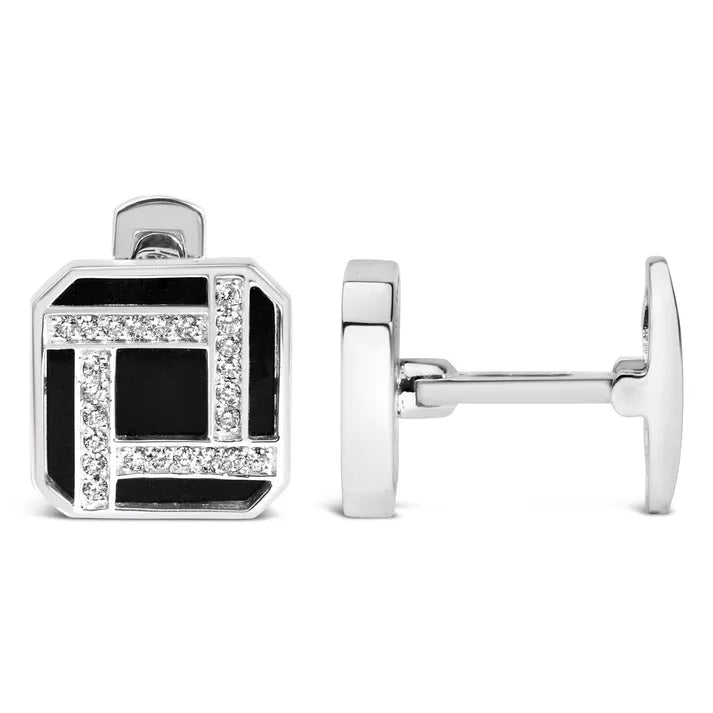Diamond stud earrings are one of the most timeless jewelry pieces anyone can own. They are elegant, versatile, and suitable for both daily wear and special occasions. However, for many shoppers, choosing the right size can feel overwhelming. What does “carat total weight” (CTW) actually mean? How big will each diamond look in millimeters? Which setting style makes the studs appear larger or more subtle?
Get 5% Off Your Next Order — Use code BLOG5 at checkout on GRANDIANI.com.

This comprehensive guide will walk you through everything you need to know about diamond earring sizes, carat weights, and settings so you can confidently select the perfect pair.
Understanding Carat Total Weight (CTW)
When browsing diamond earrings, one of the first things you’ll notice is the carat weight listed as “CTW” or “Carat Total Weight.”
-
CTW refers to the combined weight of both earrings in the pair.
-
Each earring will have half of the total carat weight.
For example:
-
A pair labeled 1.00 CTW will feature two 0.50-carat diamonds (one per ear).
-
A 2.00 CTW pair will include two 1.00-carat diamonds.
This detail is important because many first-time buyers assume that “1.00 CTW” means a one-carat diamond in each ear, when in reality, it’s half that size.
Diamond Carat Weight vs. Diamond Size
Another common misconception is that carat weight always equates to size. While carats measure weight, the visible size of the diamond is determined by its millimeter (mm) diameter, which varies based on cut quality.
-
A well-cut diamond maximizes brilliance while keeping balanced proportions.
-
A deep cut diamond may carry more weight in its pavilion (the lower part), making it look smaller from the top view, even though the carat weight is the same.
That’s why jewelers often provide millimeter size charts alongside carat weights.
Diamond Earring Size Chart
Below is a simplified guide to what carat total weight looks like in diamond stud earrings, along with approximate millimeter measurements for each stone:
| Pair Total Weight (CTW) | Each Diamond Carat | Approx. Size (mm) |
|---|---|---|
| 2.00 ctw | 1.00 ct each | 6.5 mm |
| 1.50 ctw | 0.75 ct each | 5.8 mm |
| 1.25 ctw | 0.62 ct each | 5.55 mm |
| 1.00 ctw | 0.50 ct each | 5.0 mm |
| 0.75 ctw | 0.375 ct each | 4.67 mm |
| 0.62 ctw | 0.31 ct each | 4.3 mm |
| 0.50 ctw | 0.25 ct each | 4.1 mm |
| 0.40 ctw | 0.20 ct each | 3.8 mm |
| 0.33 ctw | 0.165 ct each | 3.5 mm |
| 0.25 ctw | 0.125 ct each | 3.2 mm |
This table helps visualize how large each diamond will appear on your ear.
How Different Carat Sizes Look When Worn
Understanding carat sizes on paper is one thing, but imagining how they’ll look on your ears is another. Here’s a breakdown:
0.25 CTW – Everyday Subtle Sparkle
-
Each earring features a tiny 0.125-carat diamond, about 3.2 mm wide.
-
Perfect for a minimalist look, second piercings, or a subtle everyday accessory.
0.50 CTW – Dainty and Understated
-
Each stud holds a 0.25-carat stone, about 4.1 mm in size.
-
Ideal for students, professionals, or anyone who wants just a hint of sparkle.
1.00 CTW – Classic and Versatile
-
Features two 0.50-carat diamonds, 5 mm each.
-
Considered the “sweet spot” for most buyers: noticeable but not overpowering.
-
Suitable for daily wear and formal occasions.
1.50 CTW – Bold but Elegant
-
Each stud is 0.75 carats, about 5.8 mm wide.
-
Makes a stronger statement, great for special events.
-
Popular among those who want earrings that feel “substantial.”
2.00 CTW – Standout Sparkle
-
Two 1.00-carat diamonds, each 6.5 mm.
-
Noticeably luxurious and glamorous.
-
Works best for evening wear, anniversaries, or milestone gifts.
Carat Buying Tips
When choosing the right carat size for your earrings, keep these factors in mind:
-
Face Shape and Ear Size
-
Petite ears may look overwhelmed by large studs.
-
Larger lobes can handle more substantial stones.
-
-
Lifestyle and Comfort
-
If you plan to wear your studs daily, smaller sizes (0.50–1.00 CTW) are more practical.
-
Larger sizes may be better reserved for occasional wear.
-
-
Cut Quality
-
Prioritize Excellent or Very Good cut grades.
-
A poorly cut diamond may carry weight hidden at the base, reducing visible sparkle.
-
-
Budget
-
Prices rise significantly as carat weight increases.
-
Consider lab-grown diamonds if you want larger studs at a more affordable price.
-
The Role of Diamond Shape
Most buyers choose round brilliant cut studs because they maximize sparkle and symmetry. However, other shapes also influence size perception:
-
Princess Cut (Square): Faces up slightly smaller than round but offers modern elegance.
-
Oval or Marquise: Appear larger than round diamonds of the same carat due to elongated shapes.
-
Cushion Cut: Softer corners and vintage appeal, faces up smaller but can look bold with halo settings.
Choosing a shape is largely a matter of style preference, but keep in mind that some cuts visually maximize size better than others.
Diamond Stud Settings and Their Impact on Size
The setting style you choose can dramatically influence how large your earrings appear.
1. 4-Prong Setting (Basket Setting)
-
Classic and secure.
-
Maximizes light entry, enhancing sparkle.
-
Adds just a touch of extra volume around the stone.
2. Bezel Setting
-
Encircles the diamond in a thin metal frame.
-
Provides excellent protection against chips or loss.
-
Makes the diamond appear larger than its actual carat weight due to the added metal border.
3. Martini Setting
-
Minimal metal with three or four prongs.
-
Positions the stone closer to the earlobe for a sleek, understated look.
-
Does not add visual size but emphasizes the stone itself.
4. Halo Setting
-
Features a central diamond surrounded by smaller accent stones.
-
Greatly enhances the perceived size of each stud.
-
Adds extra sparkle and glamour—ideal for formal wear.
When selecting your setting, consider whether you prefer understated elegance or a bold, eye-catching effect.
Natural vs. Lab-Grown Diamond Studs
Today’s buyers have the option of choosing between natural diamonds and lab-grown diamonds.
-
Natural Diamonds
-
Formed over billions of years in the Earth.
-
Rarer and traditionally associated with luxury.
-
Often more expensive for the same carat weight.
-
-
Lab-Grown Diamonds
-
Created in laboratories with the same physical and chemical properties as natural diamonds.
-
Ethically sourced and eco-friendly.
-
Typically cost 30–50% less, making it possible to purchase larger studs on the same budget.
-
For those focused on size, lab-grown diamonds provide excellent value without compromising quality or brilliance.
Choosing the Right Diamond Quality
While carat weight and size are key, don’t overlook the other Four Cs:
-
Cut: The most important factor for sparkle. Always choose Very Good or Excellent.
-
Color: Near-colorless grades (G–H) are ideal for studs; they appear white without the premium price of D–F grades.
-
Clarity: Since studs are viewed from a distance, SI1–SI2 clarity grades often appear eye-clean and offer good value.
-
Carat: Choose based on your style, comfort, and budget.
Balancing these four factors ensures you get stunning earrings that look bright and brilliant, regardless of size.
Popular Diamond Earring Sizes
While preferences vary, some sizes are universally popular:
-
0.50 CTW (0.25 each): Minimalist elegance, perfect starter studs.
-
1.00 CTW (0.50 each): The most classic and versatile size.
-
1.50 CTW (0.75 each): Noticeable, elegant, and luxurious without being too heavy.
-
2.00 CTW (1.00 each): A statement piece that exudes sophistication.
Styling Diamond Stud Earrings
How you wear your diamond studs can enhance their beauty:
-
Daytime: Smaller carat weights (0.25–1.00 CTW) are ideal for office wear, casual outings, or layered with other earrings.
-
Evening: Larger studs (1.50–2.00 CTW) or halo settings add drama for formal occasions.
-
Everyday: If you prefer a “signature look,” choose the size you’re comfortable wearing daily, often 1.00–1.50 CTW.
Caring for Your Diamond Earrings
To maintain brilliance and longevity:
-
Clean regularly with mild soap, warm water, and a soft brush.
-
Store in a fabric-lined jewelry box to avoid scratches.
-
Have prongs checked periodically by a jeweler to ensure diamonds remain secure.
Final Thoughts
Selecting the perfect diamond earring size is about balancing style, comfort, and budget. Whether you prefer subtle elegance or bold glamour, understanding CTW, millimeter sizes, cut quality, and setting styles will help you make an informed choice.
-
For a classic everyday look, 1.00 CTW studs are ideal.
-
For a luxurious statement, 2.00 CTW studs stand out beautifully.
-
If budget is a concern, consider lab-grown diamonds or a halo setting to maximize visual size.
By applying these tips, you’ll be able to design or purchase diamond stud earrings that perfectly reflect your style and sparkle brilliantly for years to come.

